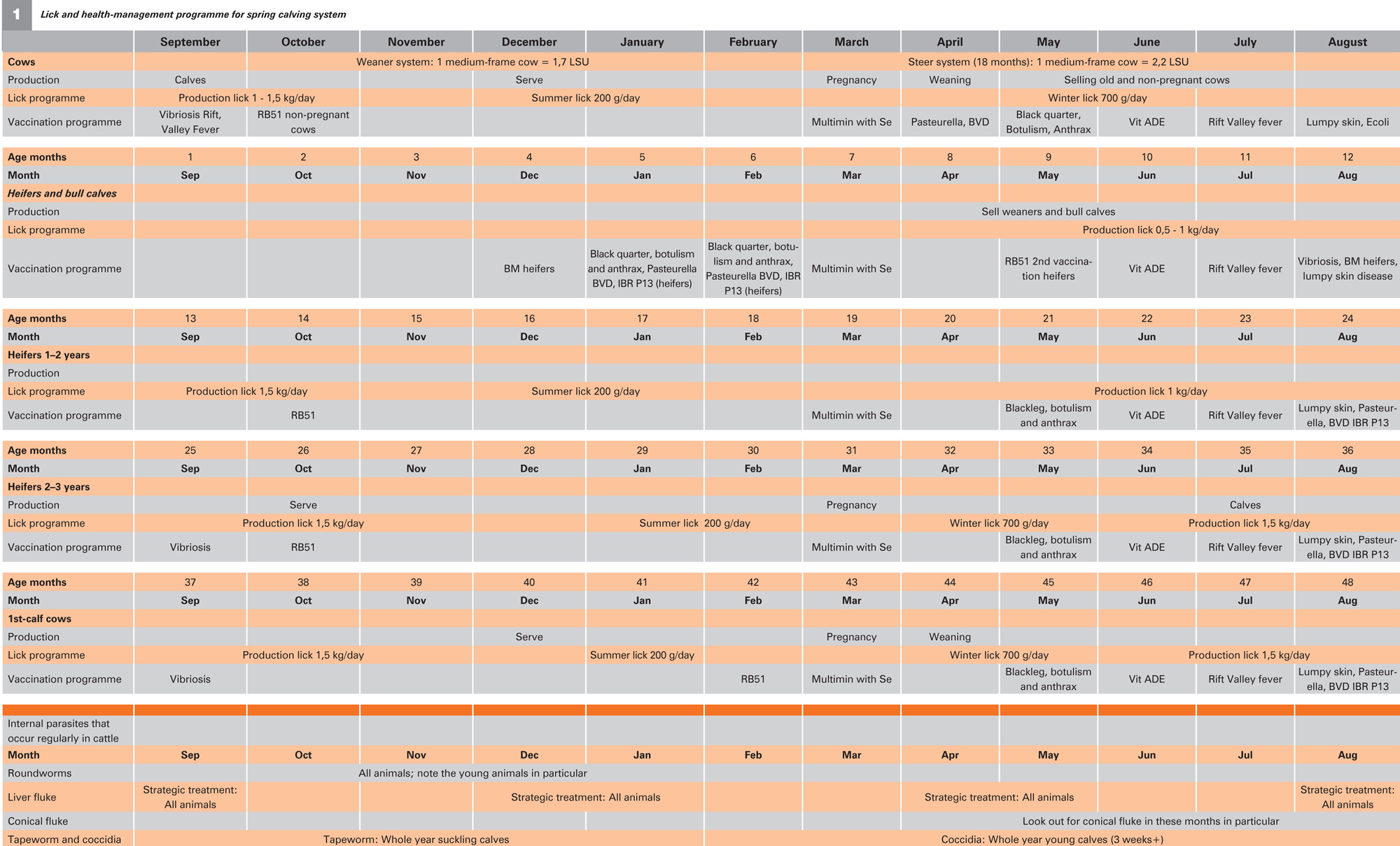July 2025
| PIETMAN BOTHA, INDEPENDENT AGRI- CULTURAL CONSULTANT |
 |
FOOD IS THE MOST IMPORTANT ASPECT FOR CATTLE IN A GOOD CONDITION. WITH GOOD PLANNING, THESE CATTLE CAN HAVE BEAUTIFUL FAT CALVES AS WELL. THE RIGHT LICK AT THE RIGHT TIME HELPS CATTLE TO PRODUCE ON THE AVAILABLE PASTURES. LICKS SHOULD NOT BE REGARDED AS A SOURCE OF FOOD, BUT AS SUPPLEMENTARY FEED.
It is winter and animals usually need hay bales for extra feed. A rule of thumb is one big round bale per head per month. This will translate into one bale for 30 heads per day. It’s better to put one hay bale in a bale basket than just to place it on the ground. If you don’t have bale baskets, rather roll the big bale out so that all the animals can feed simultaneously. Feed daily if you do not have bale baskets.
The protein in licks helps with the breakdown of the plant material in the animal’s stomach, which is very important for animal growth. Therefore, make sure that the licks provided are absorbable and meet the nutritional needs of the livestock.
A healthy animal grows and produces – therefore, ensure that the animals’ health is always at an acceptable level. Both internal and external parasites must be controlled in a timely and preferably preventive manner. Regular dung samples can contribute to determining the dosing and its effectiveness.
In Table 1, an example of a lick and health management programme for the spring calving system is provided. Take this programme to your local veterinarian and local animal feed consultant to adjust it to your animals’ needs. This will help to produce beautiful weaners.

Publication: July 2025
Section: Pula/Imvula